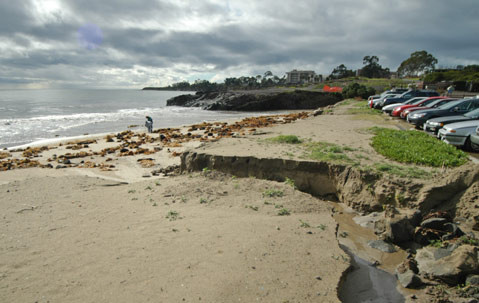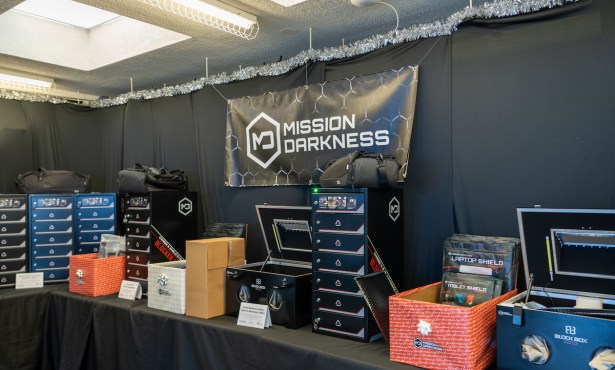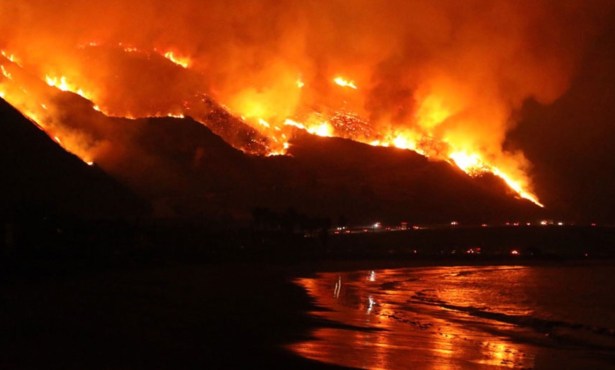Study Finds Two-Thirds of Local Beaches Will Be Lost to Sea-Level Rise by 2100
Recent Study Looks at Effects on Coastal Wetlands, Beaches, and Shore Species

Santa Barbara’s diverse coastal ecosystems “are unmanaged; they change with the seasons; they do what they do,” said Jenny Dugan, a UCSB marine ecologist. But local ecosystems can’t be left to manage themselves for much longer.
Dugan is a principal investigator on a newly released Coastal Ecosystem Vulnerability Assessment (CEVA) funded by the National Oceanic and Atmospheric Administration that details the potential impacts of climate change to Santa Barbara County’s coastline ecosystems, especially beaches and wetlands. “If we value them, we have to make plans for them,” said Monique Myers, a California Sea Grant researcher who organized the study. “They are on the front line of climate change.”
Researchers tested several different modeling techniques, which consistently predicted that average temperatures will increase throughout the century. According to Dan Cayan, a principal investigator and meteorologist at UC San Diego’s Scripps Institution of Oceanography, we can expect to see somewhere around 18 inches of sea-level rise by mid-century, and three feet by 2100. While annual rainfall likely won’t change much, most of the models used by the study showed an increase in the number of long dry spells and a shorter, more extreme wet season. Heavy rainfall will cause increased runoff and erosion of coastal habitats. And up to two-thirds of local beaches will be lost by 2100.
Resulting changes to wetlands like the Carpinteria Salt Marsh will threaten rare plants and birds — including Belding’s savannah sparrow, listed as endangered by the state — and deprive animals of food and nursery habitats. Rising sea levels will drown sandy beaches, and greater wave energy will wash away sediment that hosts invertebrates like sand crabs and beach hoppers. Those species in turn form an essential food source for shorebirds, fish, seals, and sea lions. The 45-50 percent of beach species that rely on upper-beach and wrack habitats, including federally threatened snowy plovers and endangered California least terns, will be particularly affected.
The Santa Barbara Area CEVA’s investigators hail from a number of ecological research programs, including UCSB’s Coastal Long-Term Ecological Research Project and Northeastern University. To produce the report, they drew on downscaled versions of larger climate models; earlier studies of local ecosystems, like the channel’s kelp forests; and new, on-the-ground research. Researchers walked from the harbor to Ellwood with GPS backpacks and gathered new information on coastal species — sometimes chasing rogue beach hoppers along the sands. Combining global-scale models with local data “allowed this huge leap in our understanding about the needs of this habitat and this ecosystem,” UCSB’s Dugan said.
Local administrations — including the cities of Santa Barbara, Goleta, and Carpinteria, as well as the county and UCSB — have been involved in the process, some consulting on the project from the very beginning. “Something like 50 percent of coastal land in California is privately owned,” said Sea Grant researcher Myers. “City and county planners have influence over that land.” The SBA CEVA is designed to provide planners with reliable information to use in decision making.
For example, as local beaches succumb to sea-level rise, they’ll narrow significantly, often with no room to move inward. Traditional management techniques focus on preserving infrastructure or the shape of the coastland. “Putting a seawall on a beach, you change the ability of that beach to respond to ocean dynamics,” Dugan explained. A land-use planner armed with new information might allow dunes to build up rather than grooming the sand, storing more sediment for local ecosystems. “It raises a question about the values of ecosystem and the value of public access to our coast,” said Jackie Campbell, a now-retired community development director for the City of Carpinteria who consulted on the project. “We do groom many of our beaches … for beachgoers, and we lose some of our ecosystems as a result of that.”
That said, the report’s authors insist that they’re not telling local communities what to do: “We want them to be able to make good decisions and to understand the decisions that they’re making.” Myers explained. “The next step, if people are interested, would be to do that study about potential management options and adaptations.”
For locals who want to help keep tabs on the coastline, Myers suggests getting involved in California Sea Grant’s CoAST SB, a citizen-science program that conducts monthly surveys of Santa Barbara and Ventura county beaches.



